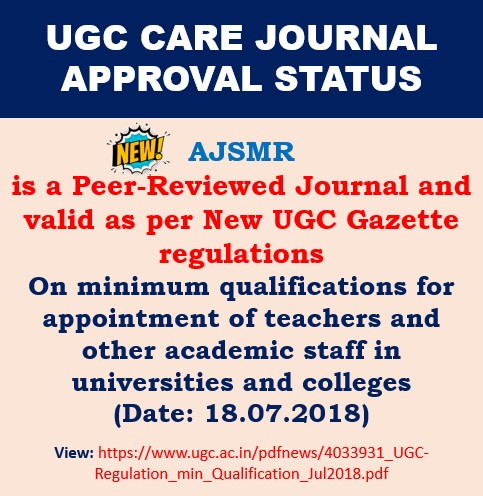Original Research Article I Volume 4 I Issue 1 I 2018
Ethnomedicinal Practices in Different Communities of Telangana for Treatment of Wounds
Vanga Sridhar, Tharigoppula Sunitha, Sriramula Harikishan Prasad, Bookya Padmaja
The American Journal Science and Medical Research; 4(1); 20-25
DOI:http://dx.doi.org/10.17812/ajsmr4105
Abstract:
India is well known for its great biological heritage and the present study is carried out in the Telangana State of India. The heavy greenery forests are home to several ethnic communities. The study was undertaken for the documentation of the traditional knowledge of ethnic people and to investigate plant distribution, abundance and biological activity of medicinal plants in the treatment of wounds. Field trips were made in Telangana districts to collect ethnomedicinal information from traditional healers. The collection of information was through interviews and during interviews plant details, part of the plant used, the method of preparation and dosage were recorded. The present study resulted in recording 99 medicinal plant species belonging to 54 families to treat different types of wounds by ethnic people in Telangana. The highest number of species belonging to Asteraceae (8 Species). Ethnomedicinal practices in the Telangana state of India revealed uses of 99 medicinal plants in the treatment of various types of wounds
Keywords:
thnomedicine, Wounds, Traditional healers, Telangana state.
References:
[1]. AnkamSandhyarani (2017). Ethnobotanical study of medicinal plants used by traditional users in Kondagattu. The Ame J Sci& Med Res, 3(1):4-9.
[2]. Ayyanar M, Ignacimuthu S, (2009). Herbal medicines for wound healing among tribal people in Southern India: ethnobotanical and scientific evidences. International Journal of Applied Research in Natural Products, 2, 29–42.
[3]. Chah K.F, Eze C.A, Emuelosi C.E, Esimone C.O, (2006). Antibacterial and wound healing properties of methanolic extracts of some Nigerian medicinal plants. Journal of Ethnopharmacology, 104, 164 - 167.
[4]. Jana S, Sridhar V, Ramakrishna V, Mamatha P, Senapati A. K., (2013). Evaluation of wound healing and antimicrobial activities of leaf extracts of VitexNegundo Linn.Journal of Pharmacy Research BioMedRx, 1(5), 493-497.
[5]. Kumar B, Vijayakumar M, Govindarajan R, Pushpangadan P, (2007). Ethnophar- macologicalapproaches to wound healing exploring medicinal plants of India. Journal of Ethnopharmacology, 114, 103–113.
[6]. Pradeep Bhat, GurumurthiHegde, Ganesh R. Hegde, (2012). Ethnomedicinal practices in different communities of Uttara Kannada district of Karnataka for treatment of wounds. Journal of Ethnopharmacology, 143, 501–514.
[7]. PranaviSreeramoju and Estari Mamidala (2016). An Ethnobotanical Survey of Antidiabetic plants used by tribes of Warangal District, Telangana State. The Ame J Sci& Med Res, 2(1):246-249.
[8]. Sandhya S, SaiKumar P, Vinod K.R, Banji D, Kumar K, (2011). Plantsaspotent antidiabetic andwoundhealingagents a review. Hygeia, Journal of Drugs and Medicines, 3, 11–19.
[9]. Strodtbeck F, (2001). Physiology of wound healing. Newborn Infant Nursing Reviews, 1, 43–51...
Article Dates:
Received: 29 January 2018 ; Accepted: 12 February 2018 ; Published: 25 March 2018
How To Cite:
http://dx.doi.org/10.17812/ajsmr4105 Received : 29January, 2018 Accepted; 12February 2018 Available online : 25March 2018



